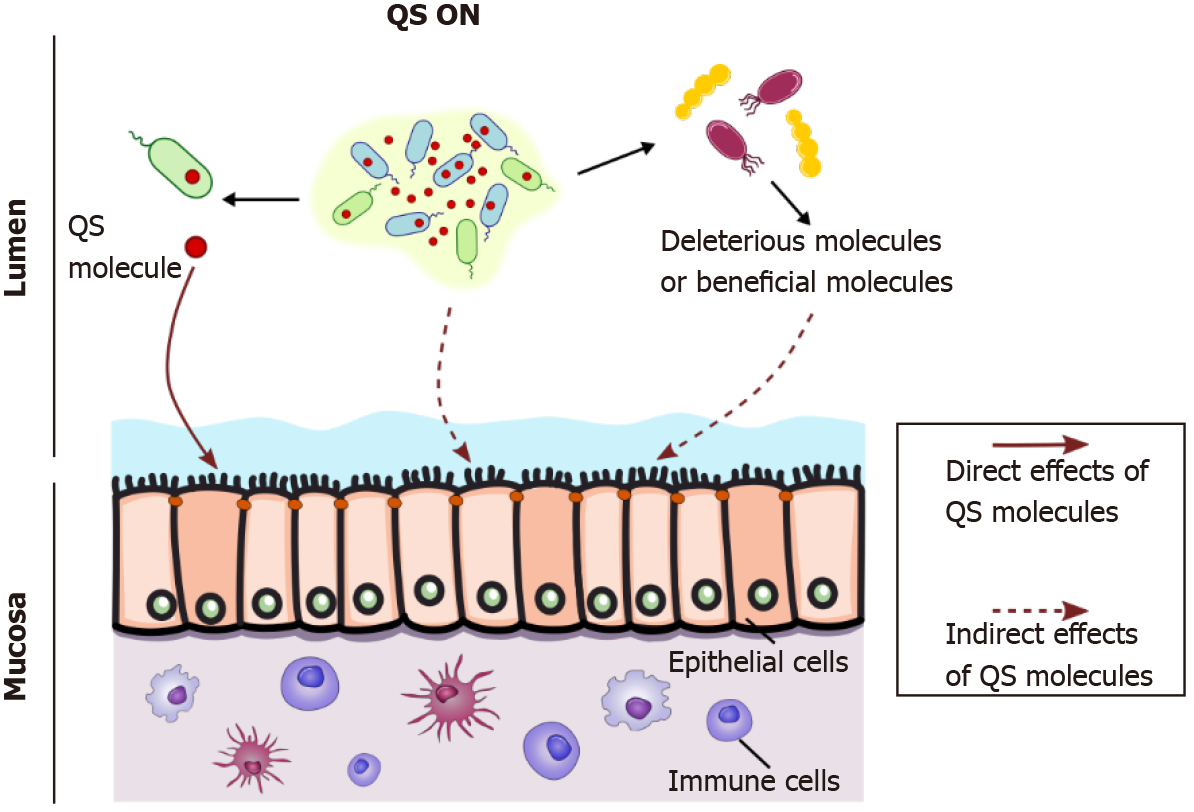Copyright
©The Author(s) 2021.
World J Gastroenterol. Nov 14, 2021; 27(42): 7247-7270
Published online Nov 14, 2021. doi: 10.3748/wjg.v27.i42.7247
Published online Nov 14, 2021. doi: 10.3748/wjg.v27.i42.7247
Figure 2 Interkingdom dialog between bacteria and the host through quorum sensing molecules.
When reaching a threshold concentration within a bacterial community, quorum sensing (QS) autoinducers synchronize group behaviors such as virulence and attachment-effacement strategies as in enterohemorrhagic Escherichia coli, thus indirectly affecting the host (dotted line arrow, middle). QS molecules can impact the host through direct contacts (full arrow, left) with host cells, such as epithelial or immune cells, as has been extensively shown for the Pseudomonas aeruginosa QS molecule 3-oxo-C12-HSL, which freely enters mammalian cells. In addition, QS molecules can indirectly modify the host (dotted line arrow, right) through effects on other bacterial populations with different metabolic properties. QS: Quorum sensing.
- Citation: Coquant G, Aguanno D, Pham S, Grellier N, Thenet S, Carrière V, Grill JP, Seksik P. Gossip in the gut: Quorum sensing, a new player in the host-microbiota interactions. World J Gastroenterol 2021; 27(42): 7247-7270
- URL: https://www.wjgnet.com/1007-9327/full/v27/i42/7247.htm
- DOI: https://dx.doi.org/10.3748/wjg.v27.i42.7247









